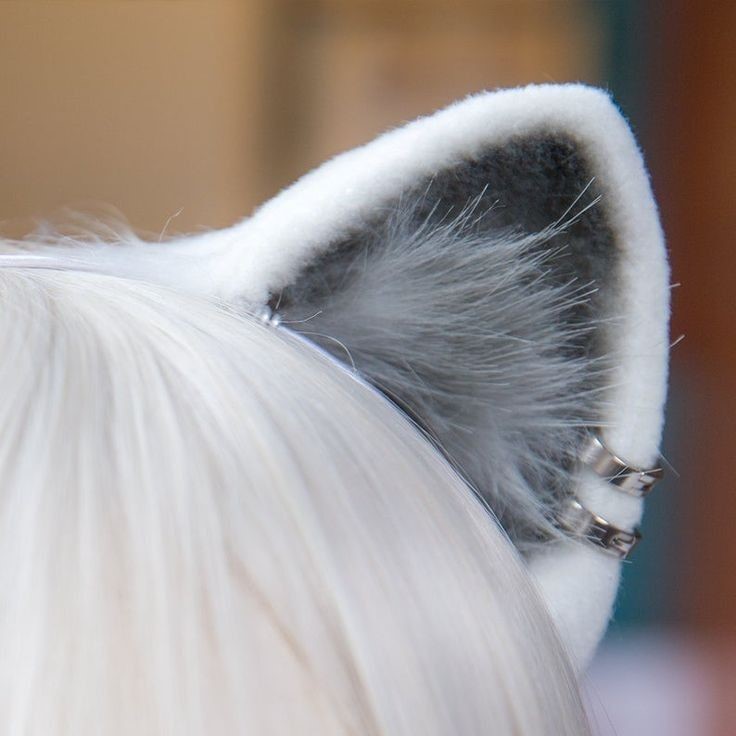Learn about your cat’s ears from Henry’s pocket and dual ear flaps to cleaning tips and common ear problems like mites, infections, and allergies. Keep your cat’s hearing healthy with this complete guide.
Understanding Your Cat’s Ears: Flaps, Care, and Common Problems
A cat’s ears are small but incredibly complex. Beyond helping them hear the faintest rustle of a mouse, their ears play an important role in balance, communication, and overall health. Let’s take a closer look at what those little ear flaps do, whether cats need ear cleaning, and how to spot signs of ear trouble before it becomes serious.
What’s the Little Flap on a Cat’s Ear?
That adorable little flap on the outer edge of your cat’s ear is called the cutaneus marginal pouch, or Henry’s pocket. It’s a small skin fold found in many animals, including dogs, bats, and foxes.
While scientists aren’t entirely sure of its purpose, several theories exist:
- It may help cats detect high-pitched sounds by filtering specific frequencies.
- It could aid ear flexibility, making it easier for cats to pinpoint sound directions.
- Some believe it reduces wind interference for better hearing when outdoors.
Either way, it’s completely normal and one of those quirky feline features that make cats so fascinating!
Why Do Cats Have Two Ear Flaps?
Cats appear to have two flaps because their ears consist of an outer flap (the pinna) and an inner ear canal covered by cartilage and skin. The pinna can rotate up to 180 degrees, allowing your cat to locate sounds with incredible precision.
This double structure helps cats:
- Capture and funnel sound waves more efficiently
- Maintain balance through their inner ear’s vestibular system
- Communicate mood, since ear position often reflects emotion (forward = alert, sideways = irritated)
Do Cats Need Their Ears Cleaned?
Most cats do not need routine ear cleaning their ears are self-maintaining and naturally push out debris. However, some cats are prone to wax buildup, especially breeds with folded or very furry ears, like Scottish Folds or Persians.
You should only clean your cat’s ears if:
- You see visible dirt, wax, or debris
- There’s a mild odor or discharge
- Your vet recommends it
How to clean your cat’s ears safely:
- Use a vet-approved ear cleaner (never alcohol or hydrogen peroxide).
- Gently lift the ear flap and apply a few drops.
- Massage the base of the ear.
- Wipe away loosened debris with a soft cotton pad.

If your cat shows signs of pain, redness, or persistent scratching stop and contact your vet.
What Does a Cat’s Infected Ear Look Like?
An infected cat ear often shows clear visual signs of discomfort and inflammation. Look for:
- Redness or swelling inside the ear
- Dark brown or yellow discharge
- A strong or sour smell
- Constant head shaking or scratching
- Sensitivity when touched
If untreated, ear infections can lead to hearing loss or deeper infections, so it’s vital to see a vet promptly.
The Most Common Ear Problems in Cats
Here are some of the most frequent ear issues veterinarians encounter:
1. Ear Mites (Otodectes cynotis)
Tiny parasites that feed on ear wax and oils, causing intense itching and a coffee-ground-like discharge. Highly contagious between cats, especially in multi-pet homes.
Treatment: Prescription drops or topical medications that kill mites and soothe inflammation.
2. Yeast or Bacterial Infections
Excess moisture or wax buildup can cause an imbalance in ear flora, leading to infection. Cats may shake their head, paw at their ears, or have a noticeable odor. Treatment: Vet-prescribed ear drops containing antibiotics or antifungal agents.
3. Allergies
Food or environmental allergies (like pollen or dust) can cause chronic ear inflammation. Recurrent infections often point to an underlying allergy.
Treatment: Identifying and avoiding triggers, allergy management diets, or anti-inflammatory medication.
4. Polyps or Tumors
Benign growths called nasopharyngeal polyps can develop in the ear canal or middle ear, leading to head tilting or balance problems.
Treatment: Usually surgical removal and veterinary follow-up.
5. Foreign Bodies
Outdoor cats sometimes get grass seeds or dirt lodged in their ears, which can irritate the canal or cause infection.
Treatment: Removal by a vet never try to dig objects out yourself.
When to See a Vet
Call your veterinarian if you notice any of these signs:
- Persistent ear scratching or shaking
- Redness, swelling, or discharge
- A bad smell
- Your cat cries when touched near the ear
- Balance issues or head tilting
Prompt care can prevent more serious complications and keep your cat’s hearing sharp.
Your cat’s ears are more than just cute they’re finely tuned instruments that help them navigate the world. Understanding what’s normal (like Henry’s pocket) versus what’s concerning (like discharge or odor) helps you spot problems early and keep your feline friend comfortable and healthy.

FAQ
1. What is the little flap on a cat’s ear called?
That small fold on the side of your cat’s ear is known as Henry’s pocket or the cutaneus marginal pouch. Its exact purpose isn’t fully understood, but experts believe it helps cats detect high-frequency sounds and improves ear flexibility.
2. Should I clean my cat’s ears regularly?
No, most cats do not need regular ear cleaning. Their ears are self-cleaning. However, if you notice wax buildup, dirt, or a bad smell, it’s best to clean gently using a vet-approved ear cleaner or ask your vet to do it safely.
3. How do I know if my cat has an ear infection?
Signs of infection include redness, swelling, discharge, strong odour, frequent scratching, or head shaking. If you see any of these symptoms, schedule a vet visit right away.
4. Can ear mites spread between cats?
Yes — ear mites are highly contagious. They can easily spread through close contact, shared bedding, or grooming. If one cat in your home has mites, it’s best to treat all your pets to prevent reinfestation.
5. What happens if I don’t treat my cat’s ear infection?
Untreated infections can spread deeper into the ear canal, leading to pain, hearing loss, or even balance problems. Prompt treatment keeps your cat comfortable and prevents long-term complications.
6. Are some cat breeds more prone to ear problems?
Yes. Breeds like Scottish Folds, Persians, and Himalayan cats which have folded or very hairy ears can trap moisture or wax, making them more prone to infections. Regular ear checks can help prevent issues.
7. Can I use human ear drops or peroxide to clean my cat’s ears?
No never use human products in a cat’s ears. They can irritate or damage the delicate ear canal. Always use veterinary-approved ear cleaners designed for cats.
